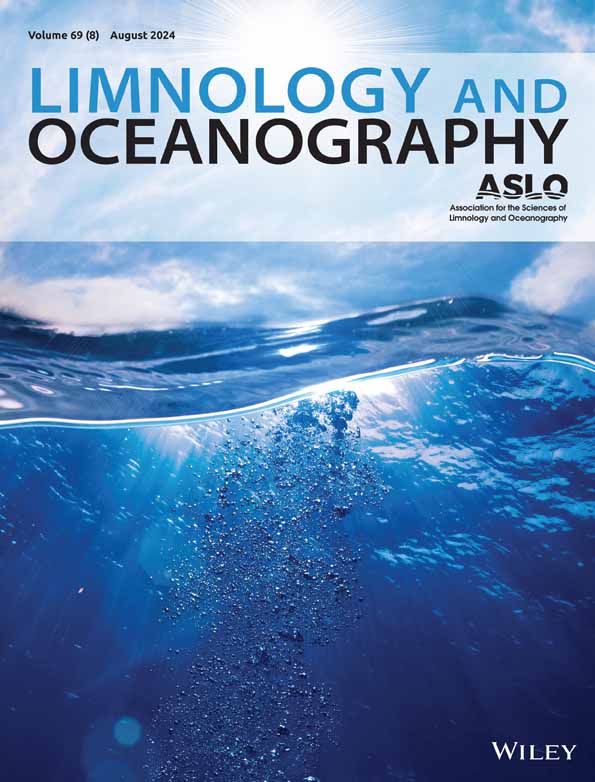Phytoplankton enhances the flocculation of suspended particulate matter in a turbid estuary
IF 3.7
1区 地球科学
Q1 LIMNOLOGY
引用次数: 0
Abstract
Over the past decades, improvements in water quality—particularly increased oxygen and reduced nitrogen concentrations—have led to changes in phytoplankton biomass and community composition in the Schelde estuary, a macrotidal estuary in Belgium/SW Netherlands. We argue that these changes have affected SPM dynamics by modifying floc stability and size. Seasonal and spatial variability in SPM flocculation dynamics were examined using water samples collected monthly from December 2021 to December 2022 at five stations in the freshwater and brackish tidal reaches of the estuary. In a custom‐built flocculation chamber, these samples were first subjected to a high turbulent shear rate (45 s浮游植物增强了浑浊河口悬浮颗粒物的絮凝作用
在过去的几十年里,水质的改善,特别是氧浓度的增加和氮浓度的降低,导致了谢尔德河口(比利时/荷兰西南部的一个大潮汐河口)浮游植物生物量和群落组成的变化。我们认为这些变化通过改变絮体的稳定性和大小来影响SPM动力学。利用2021年12月至2022年12月在河口淡水区和咸淡咸水潮河段的5个站点每月采集的水样,研究了SPM絮凝动力学的季节和空间变异。在特制的絮凝室中,这些样品首先受到高湍流剪切速率(45秒−1)的破坏,然后是较低的剪切速率(20秒−1),促进絮凝120分钟。分析絮凝体粒径分布变化,确定絮凝关键参数,特别是絮凝平衡粒径(De)和絮凝速度(Vf)。利用广义加性模型,我们评估了季节、空间、环境和生物因子对De和Vf的影响。与咸淡水站不同,淡水站絮凝动态表现出明显的季节特征,De和Vf在春夏季呈上升趋势。De、Vf和Chl a之间,以及Vf与浮游植物来源的颗粒有机碳之间存在强烈的正相关关系,表明浮游植物在絮凝过程中起着关键作用。透明外聚合物颗粒(TEP)由于其黏性能促进颗粒絮凝,与絮凝增强的相关性较弱,表明TEP的性能可能受其具体组成、年龄和再矿化等因素的影响。
本文章由计算机程序翻译,如有差异,请以英文原文为准。
求助全文
约1分钟内获得全文
求助全文
来源期刊

Limnology and Oceanography
地学-海洋学
CiteScore
8.80
自引率
6.70%
发文量
254
审稿时长
3 months
期刊介绍:
Limnology and Oceanography (L&O; print ISSN 0024-3590, online ISSN 1939-5590) publishes original articles, including scholarly reviews, about all aspects of limnology and oceanography. The journal''s unifying theme is the understanding of aquatic systems. Submissions are judged on the originality of their data, interpretations, and ideas, and on the degree to which they can be generalized beyond the particular aquatic system examined. Laboratory and modeling studies must demonstrate relevance to field environments; typically this means that they are bolstered by substantial "real-world" data. Few purely theoretical or purely empirical papers are accepted for review.
 求助内容:
求助内容: 应助结果提醒方式:
应助结果提醒方式:


